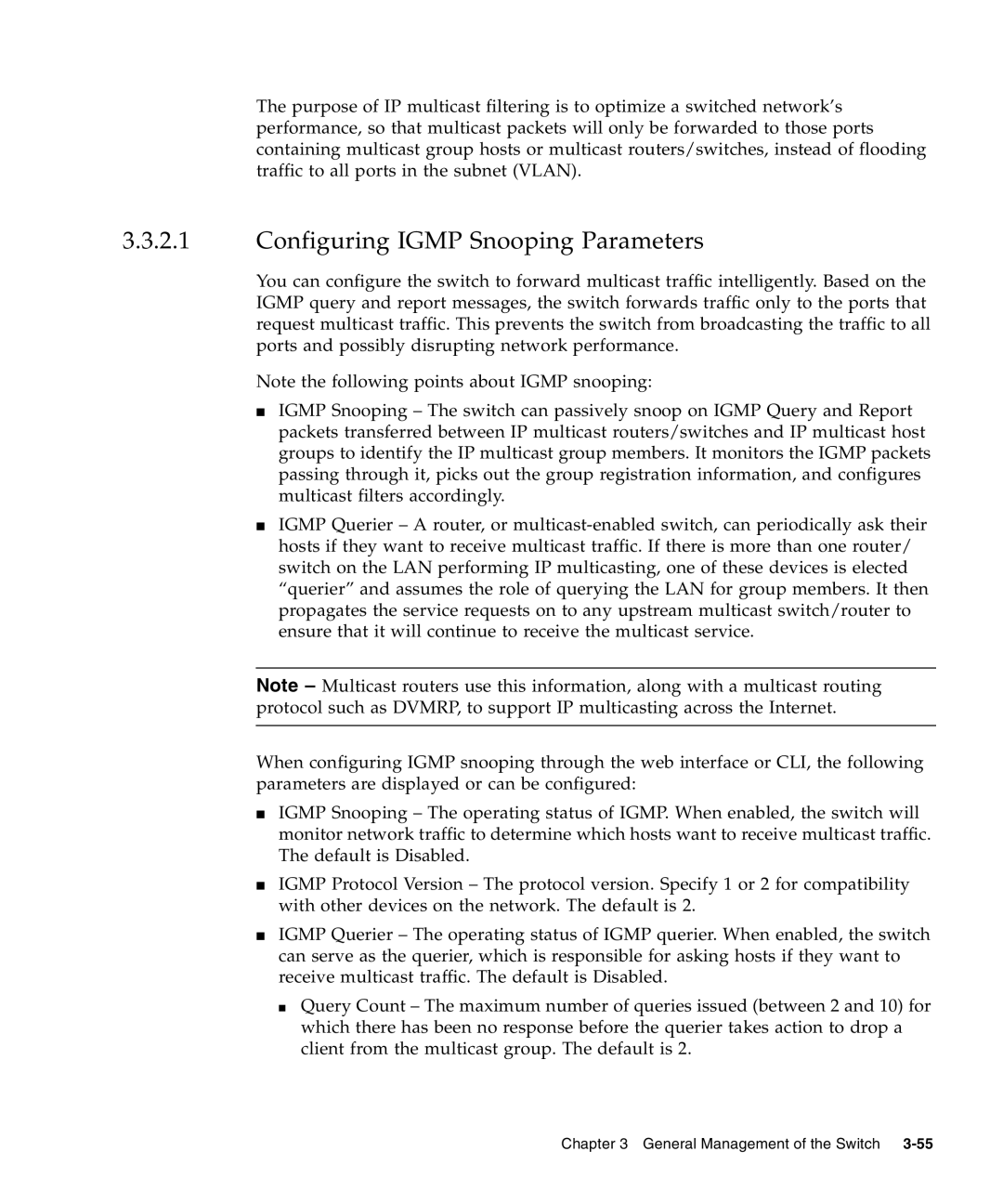The purpose of IP multicast filtering is to optimize a switched network’s performance, so that multicast packets will only be forwarded to those ports containing multicast group hosts or multicast routers/switches, instead of flooding traffic to all ports in the subnet (VLAN).
3.3.2.1Configuring IGMP Snooping Parameters
You can configure the switch to forward multicast traffic intelligently. Based on the IGMP query and report messages, the switch forwards traffic only to the ports that request multicast traffic. This prevents the switch from broadcasting the traffic to all ports and possibly disrupting network performance.
Note the following points about IGMP snooping:
■IGMP Snooping – The switch can passively snoop on IGMP Query and Report packets transferred between IP multicast routers/switches and IP multicast host groups to identify the IP multicast group members. It monitors the IGMP packets passing through it, picks out the group registration information, and configures multicast filters accordingly.
■IGMP Querier – A router, or
Note – Multicast routers use this information, along with a multicast routing protocol such as DVMRP, to support IP multicasting across the Internet.
When configuring IGMP snooping through the web interface or CLI, the following parameters are displayed or can be configured:
■IGMP Snooping – The operating status of IGMP. When enabled, the switch will monitor network traffic to determine which hosts want to receive multicast traffic. The default is Disabled.
■IGMP Protocol Version – The protocol version. Specify 1 or 2 for compatibility with other devices on the network. The default is 2.
■IGMP Querier – The operating status of IGMP querier. When enabled, the switch can serve as the querier, which is responsible for asking hosts if they want to receive multicast traffic. The default is Disabled.
■Query Count – The maximum number of queries issued (between 2 and 10) for which there has been no response before the querier takes action to drop a client from the multicast group. The default is 2.
Chapter 3 General Management of the Switch
